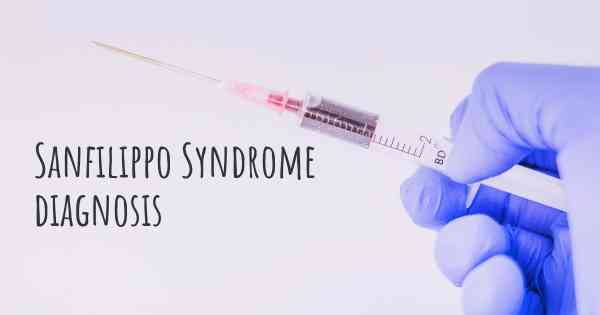How is Sanfilippo Syndrome diagnosed?
See how Sanfilippo Syndrome is diagnosed. Which specialists are essential to meet, what tests are needed and other useful information for the diagnosis of Sanfilippo Syndrome

Sanfilippo Syndrome Diagnosis
Sanfilippo Syndrome, also known as mucopolysaccharidosis type III (MPS III), is a rare genetic disorder that affects the body's ability to break down certain sugars. It is a progressive condition that primarily affects the brain and nervous system. Diagnosing Sanfilippo Syndrome can be challenging due to its rarity and the similarity of symptoms to other conditions. However, early diagnosis is crucial for managing the disease and providing appropriate care.
Medical History and Physical Examination:
The diagnostic process for Sanfilippo Syndrome typically begins with a comprehensive medical history review and a physical examination. The doctor will inquire about the child's developmental milestones, behavior, and any noticeable symptoms. They will also perform a thorough physical examination to assess growth patterns, facial features, and any signs of organ enlargement.
Urine and Blood Tests:
Urine and blood tests are essential in diagnosing Sanfilippo Syndrome. These tests help identify the presence of specific substances called glycosaminoglycans (GAGs) that accumulate in the body due to the enzyme deficiency associated with the disorder. Elevated levels of GAGs in the urine and blood can indicate the possibility of Sanfilippo Syndrome.
Genetic Testing:
Genetic testing plays a crucial role in confirming a diagnosis of Sanfilippo Syndrome. It involves analyzing the child's DNA to identify any mutations or abnormalities in the genes responsible for producing the enzymes needed to break down sugars. This testing can be done through various methods, including DNA sequencing, gene panel testing, or chromosomal microarray analysis.
Enzyme Activity Assay:
An enzyme activity assay is often performed to measure the activity levels of specific enzymes associated with Sanfilippo Syndrome. This test helps determine if the deficiency of these enzymes is causing the accumulation of GAGs in the body. It involves analyzing a small sample of cells, usually obtained through a skin biopsy or blood sample, to assess enzyme activity levels.
Brain Imaging:
Imaging studies, such as magnetic resonance imaging (MRI) or computed tomography (CT) scans, may be conducted to evaluate the structure and function of the brain. These scans can help identify any abnormalities or changes in the brain that are characteristic of Sanfilippo Syndrome.
Consultation with Specialists:
Due to the complexity of Sanfilippo Syndrome, consultation with various specialists is often necessary for an accurate diagnosis. These may include geneticists, pediatric neurologists, metabolic specialists, and other healthcare professionals experienced in diagnosing and managing rare genetic disorders.
Confirming the Diagnosis:
Once all the necessary tests and evaluations are completed, the healthcare team will review the results to confirm the diagnosis of Sanfilippo Syndrome. The combination of clinical findings, genetic testing, enzyme activity assay, and imaging studies helps establish a definitive diagnosis.
Conclusion:
Diagnosing Sanfilippo Syndrome requires a comprehensive approach involving medical history review, physical examination, urine and blood tests, genetic testing, enzyme activity assay, brain imaging, and consultation with specialists. The combination of these diagnostic tools enables healthcare professionals to accurately identify and confirm the presence of Sanfilippo Syndrome. Early diagnosis is crucial for initiating appropriate treatment and support to improve the quality of life for individuals with this rare genetic disorder.
Posted Nov 6, 2019 by TSF Inc Team Sanfilippo Foundation
Posted Jan 1, 2018 by Danielle 3160
Posted Feb 25, 2019 by Patty Jesse 3000
Posted Nov 3, 2019 by Anne-marie 2500
Posted Nov 6, 2019 by Cara 800








